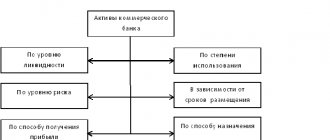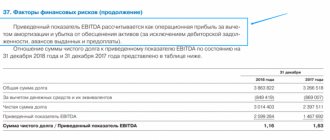Why calculate profitability?
The financial profitability of a project is one of the key indicators when analyzing a business. In simple terms, by calculating profitability, you will find out how well the money invested in the business pays off.
Profitability is also predicted for projects that have not yet been launched in order to understand how profitable it will be to launch it. Any startup, any franchise will be evaluated by its expected profitability. And it is assumed based on an analysis of the market and the project itself.
It is not only investors who evaluate the profitability of future projects. An entrepreneur, even if he is going to open his own business rather than buy a new franchise, must assess how profitable his future business will be. And based on the data received, adjust further actions. Maybe something needs to be changed, or the game is not worth the candle at all and it is better to choose a different direction.
This indicator is calculated in the form of a numerical coefficient. The higher the number, the higher the profitability, the more profitable the project.
There are several main reasons to calculate profitability, in addition to what we have already mentioned:
- To be able to predict the profit of the next period.
- To be able to compare performance with competitors.
- To be able to justify the investment. This is especially important when a third party is involved in the transaction, who invests their money with the aim of making a profit in the future.
- To determine the real market value of the company. Often used in preparation for sale.
Return on sales ratio – ROS. Calculation formula
Take our proprietary course on choosing stocks on the stock market → training course
Sales (ROS) is an indicator reflecting sales efficiency. It is calculated as the ratio of profit from sales to revenue. The calculation formula is as follows:
Where:
EBIT - earnings before taxes and interest;
Revenue – revenue from sales.
In domestic practice, net profit (Net Income) is often used instead of profit before taxes and interest. Currently, return on sales is one of the key indicators of the efficiency of an enterprise and its investment attractiveness. Read more in the article: “Return on Sales (ROS). Formula. Calculation using the example of Aeroflot OJSC.
Enterprise profitability
Once again, in simple words, we will define what profitability is for a company and why it is needed:
The profitability of an enterprise is one of the main economic indicators that can show the profitability of a company from its activities (or an entrepreneur). Calculating profitability will show how justified and profitable a project or line of activity is.
You need to understand that the economic activity of a company involves a lot of different resources - labor, economic, financial, natural. The use of each of them must be justified from the point of view of economic feasibility. That is, they all must generate income, or a result that will lead to an increase in income.
By assessing profitability, you can understand which resources are not bringing the desired result and adjust their use.
To put it even more simply, profitability is the ratio between the costs of the production process and the profit received as a result. For example, if a manufacturing franchise decides to produce a new product on its own machines, it will first need to calculate what its profitability will be before launching the new line.
If a business has made a profit over a certain period of time, then it is called profitable. And accordingly – beneficial for the owner.
Profitability Factors
Many factors influence profitability. And you need to be familiar with them in order to understand how this process develops and how it can be calculated.
Experts distinguish exogenous and endogenous factors.
Exogenous factors of profitability
Exogenous (arising under the influence of something outside) include, for example, state tax policy. Because the company’s expenses on mandatory payments directly affect the company’s profitability.
For example, the recent increase in value added tax (VAT in simple words) has led to some entrepreneurs ceasing to run their businesses. It became unprofitable.
Also, exogenous factors include the geographical location of the enterprise, the general level of competition in the market, the political situation in the country, market conditions and other factors.
Restrictive measures during the pandemic in 2022 were exogenous factors reducing the profitability of, for example, travel franchises.
Endogenous (internal) factors
It is clear that, unlike exogenous ones, these factors appear within the company itself. For example, the working conditions of personnel directly affect the quality of products.
The company's logistics system has a direct impact on the company's expense items and the work of the marketing department. And in general, the financial and managerial activities of management also have something to do with all this.
There are a lot of nuances. Almost every action of the company affects other processes in one way or another. And to understand, you need to carry out analysis.
Factor analysis of firm profitability
Just in order to understand which factors influence what, factor analysis is carried out. Using it, you can determine the exact amount of the company’s income, which was received under the influence of endogenous factors. There are special formulas for determining:
Profitability = (Profit from sales of product or services / Cost) * 100%
There is another formula:
Profitability = ((Price of product or service – Cost) / Cost)) * 100%
The classic version of the analysis uses either three or five factors. For three-factor analysis, you need to take product profitability, capital intensity, and capital turnover.
For five-factor analysis, labor intensity, material intensity, depreciation, and capital turnover are used.
Due to the fact that during the analysis all factors are divided into quantitative and qualitative indicators, specialists are able to see the development of the company from different sides.
But for a better understanding, let’s first understand what types of profitability exist.
What is the profitability?
Profitability can be calculated for anything - we simply take the profit and divide it by the cost of any resource. For example, to evaluate a company, such indicators are usually considered.
- Return on Assets —finds out how well a company uses real estate, machinery, equipment, cash, and other assets.
- Profitability of fixed assets - consider the efficiency of use of resources that a business uses for production, but which are not consumed, but worn out. This includes premises and various machines, but not raw materials.
- Return on current assets is, on the contrary, the efficiency of using expended resources. For example, raw materials or money.
- Return on investment is how profitably the company uses the money raised. This indicator is needed to calculate the return on investment.
There are other types of profitability - for example, they consider the efficiency of the project, equity capital, and production.
Types of profitability
You need to understand that profitability indicators may differ depending on the area in which the enterprise operates. Therefore, economists usually distinguish three groups:
Profitability of products and services. Here the main role is played by the funds spent on the project, as well as the profit from it. It is calculated both for the entire company and for a specific product or service.
Enterprise profitability. Here you can find many different indicators, each of which will, from one side or another, characterize the processes occurring in the company. An assessment of this type of profitability is needed to evaluate the performance of the entire project by investors or owners.
Return on assets. There is also a large set of different indicators that can reflect the appropriateness of a company’s use of a specific resource. So, for example, an entrepreneur can see how rationally it is to use credit funds, their own investments, or other assets.
As a rule, profitability is analyzed not only for internal needs. This is an important stage when preparing a project for presentation to an investor or lender. It is also used in preparing a business plan to obtain sponsorship.
Return on assets ratio - ROA. 3 calculation formulas
Take our proprietary course on choosing stocks on the stock market → training course
assets ratio (ROA) is an indicator of the efficiency of an enterprise's use of assets and is calculated as the ratio of the enterprise's net profit (after tax) to the amount of assets. In other words, return on assets (ROA) reflects the profitability generated by both equity and debt capital. The higher the return on assets ratio, the more efficient the enterprise is.
⊕ example of calculating ROA for the Sukhoi Design Bureau on the balance sheet
Formula for calculating ROA. Option #1 The first option for calculating the return on assets ratio is the ratio of net profit after tax to average total assets. The calculation formula is presented below:
Where:
Net Income – net profit of the enterprise after taxation;
Total Asset – average total assets.
Formula for calculating ROA. Option #2
The second option for calculating the coefficient takes into account profit with interest on loans.
Where:
Tax rate – tax rate;
Percent on credits - interest on loans issued.
Formula for calculating ROA. Option #3
Take our proprietary course on choosing stocks on the stock market → training course
In practice, it happens that the third option is used to calculate the return on assets ratio, where the main difference is the use of profit before tax and before receiving interest on loans.
Where:
EBIT – profit before taxes and interest on loans (operating profit).
It can be noted that in all calculation formulas only the numerator changes, reflecting the various types of profit of the enterprise. The disadvantage of the return on assets ratio is the inability to take into account the costs of raising capital.
Profitability calculation
The largest indicator is, of course, the profitability of the entire company. To calculate it, accounting and statistical documents for one period are usually used.
A simplified version of the calculation looks like this:
P = BP / SA * 100%
P – profitability of the enterprise
BP – balance sheet profit. It is calculated by subtracting the cost of the product from the revenue received. But this is done before taxes!
CA is the total value of all assets, both current and non-current, as well as production facilities and resources. The data is taken from the balance sheet.
If, according to the results of the analysis, profitability is low, then the entrepreneur should urgently take action. It may be necessary to adjust production costs, or reconsider the methods used by management, or perhaps find a different supplier.
Return on assets (ROA)
The previous analysis showed the full picture. But it is impossible to do this without a preliminary analysis of the efficiency of asset use. Because their use directly affects the profit of the entire enterprise.
If after analysis the result shows that the indicator is low, then we can conclude that capital, as well as other assets, are performing poorly. More precisely, not enough. But a high indicator will indicate that the company is using the right tactics.
ROA shows the financial return of the entire project. Therefore, such analysis must be carried out frequently. This will make it possible to understand which of the objects is not generating adequate profit, to take action - to modernize it, or to abandon its use altogether.
The formula here is simple:
ROA = P / A P – profit for the entire time period used for analysis A – average value by type of asset for the same period
One of the most necessary and indicative coefficients. If the result is less than zero, this will mean that the company is operating at a loss.
Return on fixed assets (ROFA)
Fixed assets usually include the means of labor that are used in the operation of the company. The period of use of such funds should not be more than 12 months, and the amount of depreciation should be included in the calculation of the cost of the product or service. To make it clearer, here are examples of such tools:
- Buildings, structures where your workshops, warehouses, offices, etc. are located.
- Equipment that produces goods.
- Transportation vehicles – forklifts, heavy trucks.
- Furniture from the office or work furniture.
- Other transport.
- Expensive instrument.
The formula for calculation is as follows:
R = (PE / OS) * 100% PE – net profit OS – cost of fixed assets
This indicator plays a big role in commercial enterprises, giving them an idea of the profit per ruble of invested funds.
The coefficient should not fall below zero. If this happens, something needs to be changed, because the company is operating at a loss and is using fixed assets irrationally.
Return on Products Sold (ROM)
The formula for calculating this indicator is also simple:
ROM = Net profit / cost
The value of this indicator can demonstrate how much each invested ruble can bring.
The calculation scheme is simple:
- First you need to determine the time period for which the analysis will be carried out. Usually a period of one month to one year is taken.
- Next comes the calculation of all profits received from sales. To do this, income is added up.
- Next, net profit is determined.
- The last step is to apply the ROM formula.
To improve the efficiency of the analysis, you can compare such profitability indicators for several periods at once. This will give an understanding of how efficiently the company operates.
Return on Sales (ROS)
This indicator is intended to reflect the percentage of total revenue that accounts for the profit of the enterprise.
Formula for calculation:
ROS = (Profit / Revenue) * 100%
Various types of profit are used for calculation, depending on the company. It all depends on the product range, field of activity and many other parameters.
Return on sales is also often called profit margin. Since it shows the share of profit in total revenue.
Comparing this indicator over different periods of time is also a useful tool for understanding the dynamics of growth or decline in a company's performance.
If we consider the short-term period, it is worth isolating the operating profitability of sales. The formula for this is:
Operating return on sales = (Profit before taxes / Revenue) * 100%
The higher the value, the better the company performs, and the more profit its owner receives.
Profit margin
If you want to know how profitable your project is, calculate this indicator. You also need to understand that without calculating it, for example, it is impossible to draw up a high-quality business plan.
Formula:
R = VP / V VP – gross profit (revenue received minus cost). B – sales revenue
Return on Personnel (ROL)
This is a relative indicator. But no less important. In fact, everyone has long understood how important the element of labor management is in a company’s activities. Because it affects the entire production as a whole. And in order to effectively manage personnel, you need to track the number, level of training, skills, proficiency, advanced training of each, etc.
Formula:
ROL = PE / ChSH PE – net profit CHSh – number of personnel
For a more detailed analysis, the ratio of employee maintenance costs to net profit is calculated. The profitability of one employee is also checked. This is done by dividing the costs that go into its maintenance by the share of profit that it brings to the company.
Such calculations can show the state of labor management, reveal weak and strong points, and indicate the need to reduce or expand staff.
It is especially important to calculate this indicator for small enterprises so that calculations can be more effectively optimized.
Profitability threshold
This term means the minimum amount of sales at which the proceeds from these sales will cover all costs of production and bringing the product/service to the consumer. But profit is not taken into account here.
Such an indicator can help an entrepreneur plan the number of sales he will need to make in order to operate without a loss.
This indicator is often called the break-even point, or the critical point (not to be confused with the point of reaching net profit!)
You can read more about this in the material Break-even point.
Formula for calculation:
PR = PP / Kvm PR - profitability threshold PR - fixed costs for the production of goods / services and for their sale
Kvm – gross margin coefficient. You can calculate it using another formula:
Kvm = (V – Zpr) * 100% V – revenue Zpr – sum of variable costs
Criteria such as the price for the product, as well as any variable and fixed costs of the company, are of great importance for this indicator. About them - also in the article Break-even point.
How to calculate profitability
Let us give examples of calculations of ROE and ROS in the popular software products 1C:ERP, 1C:UH and with the help of our company’s specialized development - the circulation solution “WA: Financier”.
Calculation in 1C:ERP
This example focuses on ROE and return on sales. Financial analysis, which includes profitability analysis, in 1C:ERP 2 is carried out using tools on the “Budgeting and Planning”, “Financial Result and Controlling” tabs.
Automation of profitability calculation based on 1C:ERP
You can go through specific instances of budgets in connection with ROE in the paragraph of the same name.
Fig. 1 Budgeting and planning
Switching to “Budget Instances”, we end up seeing a list of them. Filtering by type of budget “ROE”, in this case we get two copies.
Fig. 2 Instances of ROE budgets
Switching to the selected instance, we see the estimated dynamics of ROE in the table (Fig. 3). In this case, from the calculated cells you can fail to decipher the original indicator.
Fig. 3 Calculated copy of the budget according to ROE
Based on sales profitability, you can, for example, build a whole family of graphs and diagrams in the “Target Indicators Monitor” (Fig. 4) to clearly display its dynamics and structure. The monitor itself is located along the path “Financial result and controlling-Target indicators-Target indicators monitor”.
Fig. 4 Monitor for target sales profitability indicators
Calculation of profitability indicators in 1C: Holding Management
In 1C:UH, analysis is carried out in the “Budgeting, reporting and analysis” tab.
Automation of profitability calculations in large holdings
Fig.5 Section with reports and analysis
Through “Types and forms of reports” we access the types of reports and, accordingly, their forms, in order to then move on to specific instances of reports.
Fig.6 Types and forms of reports
The transition to a specific report instance occurs in the list of the same name, where you can filter the reports that interest us from the general mass of reports in the “Types of reports”.
Fig. 7 Report copies, selection
The target report instance itself has a tabular form.
Fig. 8 Approximate view of a copy of a financial analysis report
The report designer allows you to set a formula for calculating an indicator in the window. Below is a possible direct form of the formula for calculating return on equity.
Fig.9 Working in 1C:UH
An example of working with “WA: Financier”
To calculate ROS, you need to highlight the value of net profit, which passes through one of the “Budgeting Items,” and the sales values, which also pass through an article from the same directory. To do this, it is better to carry out the calculation in the “Custom Report”, and graphically it can be accompanied by setting the display of KPIs on the information panel.
The type of layout settings to obtain the desired report form is shown below. Here the return on sales based on gross profit is calculated.
Fig. 10 Setting the layout in a custom report
The calculation itself is configured in the form called up by clicking the “Cell Settings” button.
Fig. 11 Setting up the calculation of profitability of sales based on gross profit
Calculation terms are also calculated in the Cell Settings forms.
Fig. 12 Setting up gross profit calculation in a custom report cell
Fig. 13 Setting up cost calculation
Fig. 14 Setting up sales volume calculation
The division by a thousand in the cells is explained by the measurement in the report in thousands of rubles, and the negative sign at cost shows the outflow of capital. As a result, cell values are added rather than subtracted when calculating gross margin. In this case, data can be taken not only from the current database (BDR_current_base), but from any one to which there are configured connections in “Financier”.
Automation of profitability calculations for companies of any size and industry based on WA: Financier
ROE is calculated in a similar way. The only nuance here is the maintenance of balance sheet accounting, from which the values of equity capital are taken: it can be maintained both in the “Financier” (in the “Management Accounting” module) and outside it. In the latter case, the value of the indicator from the balance sheet is taken from an external system using the configured “Data Sources”.
Fig. 15 Calculation of ROE in “Finansist”
Project profitability
Every entrepreneur strives to increase the scale of his business in order to increase capacity, develop and ultimately make more profit. Assessing profitability at each stage can show whether development is moving in the right direction and what indicators require adjustment and intervention.
Most often, several methods are used to calculate profitability:
- A method that allows you to calculate net present value, which will help determine the net profit from a project.
- The method used to calculate the profitability index. Used when you need to know the ratio of costs and income.
- A method that calculates the marginal efficiency of capital (internal rate of return). Used to calculate the possible level of capital expenditure for a new project.
Formula:
IRR = (net present value / initial investment amount) * 100%
Purposes for which the calculation is used:
- Determine the costs if the project is carried out using funds raised.
- Confirm the profitability and benefits of the project.
If a bank loan is taken out to implement a project, then calculating the internal rate of return will show what the maximum allowable interest rate will be. Anything above this value indicates that the course taken is unprofitable.
Example of using return on assets
ROA is most useful for comparing companies within the same industry because different industries use assets differently. For example, the ROA for service-oriented companies such as banks will be significantly higher than the ROA for capital-intensive companies such as construction or utility companies.
Let's estimate ROA for three companies in the retail industry:
- Macy's
- Kohl's
- Dillard's
Data in the table refers to the trailing 12 months (ttm) as of May 1, 2022.
Retail stocks
| Company | Net profit | Assets | ROA |
| Macy's | -$259 million | $18,082 million | -1.4% |
| Kohl's | $392 million | $14,689 million | 2.6% |
| Dillard's | $249 million | $3,508 million | 7.1% |
Every dollar Dillard's invests in assets generates 7.1 cents in net income. Dillard's was better at converting its investments into profits compared to Kohl's and Macy's. Macy's actually has a negative ROA, which is also possible. One of management's most important tasks is to make wise choices in allocating its resources, and Dillard's management appears to have been more adept than its peers during the reporting period.






